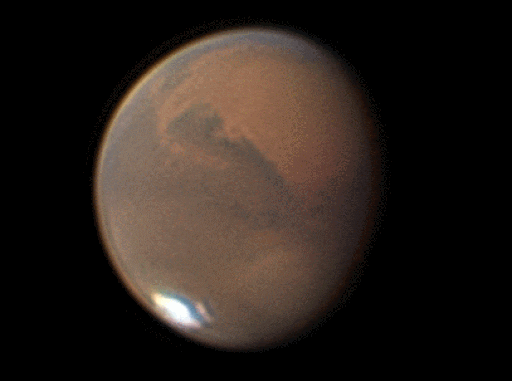Aug. 21, 2020: By the time you finish reading this sentence, you’ll be 40 km closer to Mars.
Earth and Mars are converging for a close encounter this Fall, one of the best since 2003, and their separation is rapidly shrinking–negative 8 km/s as of Aug. 21st. You are literally approaching the Red Planet. Just this week the brightness of Mars surpassed that of Sirius, the brightest star in the sky. Suddenly, Mars is almost bright enough to see in daylight and an easy target for backyard telescopes.
“Here is one hour of Mars rotating,” says amateur astronomer Maximilian Teodorescu of Magurele, Romania, who animated a sequence of photos taken Aug 18th using his 14-inch Newtonian:
“Lots of features are visible,” he says. “Note how the southern polar ice cap has contracted and broken–a result of it being late springtime on that side of Mars.”
The best is yet to come. By the night of closest approach on Oct. 6th (0.4149 AU), Mars will more than double in brightness again, outshining everything in the night sky except Venus and the Moon. Throughout this apparition, the south pole will remain tilted toward Earth, giving observers a good view of the breakup of the ice cap as Martian spring turns into summer.
Can’t wait? Right now, a good time to look is just before daybreak when Mars is high in the southern sky. Keep watching as twilight creeps up the sky. The planet’s burnt orange hue looks beautiful when surrounded by the day’s first hint of morning blue: sky map.
Congratulations, you’re now almost 500 km closer to the planet Mars.
Realtime Mars Photo Gallery
Free: Spaceweather.com Newsletter
